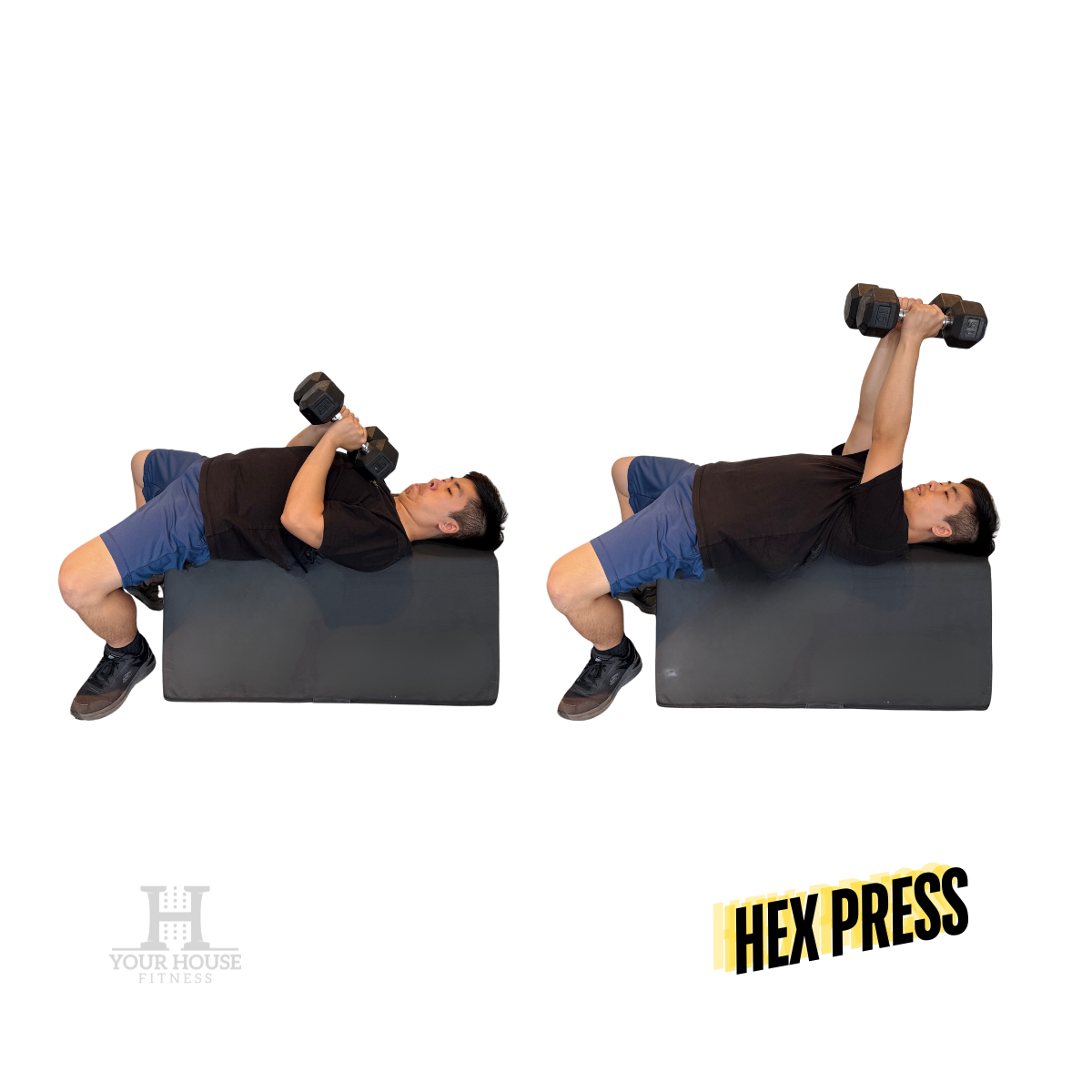Hex Press Guide: Build Chest and Triceps Strength with Maximum Contraction
Table of Contents
What Is a Hex Press?
The hex press, also known as the crush press, is a dumbbell chest exercise that emphasizes constant tension and maximum contraction of the pectoral muscles. Unlike traditional presses, you press while forcefully squeezing the dumbbells together, engaging the chest from start to finish.
This unique pressing motion combines two main chest functions — pushing weight away from the body and bringing the arms toward the midline, making it a powerful move for chest growth and definition.
How to Hex Press
Sit on the bench with a dumbbell resting on each thigh, positioned just above the knees.
Keep the dumbbells close to your chest and chin tucked in.
Roll back onto the bench in one smooth motion so your hips, upper back, and head are fully supported.
Plant your feet firmly on the ground.
Depress your shoulders (push them toward your heels) to create stability.
Squeeze the dumbbells together tightly at shoulder height.
Lower them slowly to your lower sternum while keeping pressure between the dumbbells.
Press back up, maintaining constant inward tension.
When done, bring the dumbbells to your chest, lift your knees, and use the weights to help kick forward to a seated position.
Avoid pressing the weights outward away from your body, this shifts the focus to the shoulders and reduces chest activation.
Muscles Worked During the Hex Press
Pectoralis Major (Chest): Primary muscle activated through constant squeezing and pressing.
Triceps Brachii: Assists in elbow extension during the press.
Anterior Deltoids: Stabilize the shoulders throughout the movement.
Serratus Anterior: Supports scapular positioning and stability.
Alternatives to the Hex Press
Dumbbell Bench Press: Traditional press for overall chest development.
Cable Chest Press: Keeps tension throughout the entire range of motion.
Svend Press: Similar constant tension movement with a weight plate.
Incline Dumbbell Press: Targets upper chest and shoulders.
Svend Press: Targets inner chest muscles.

